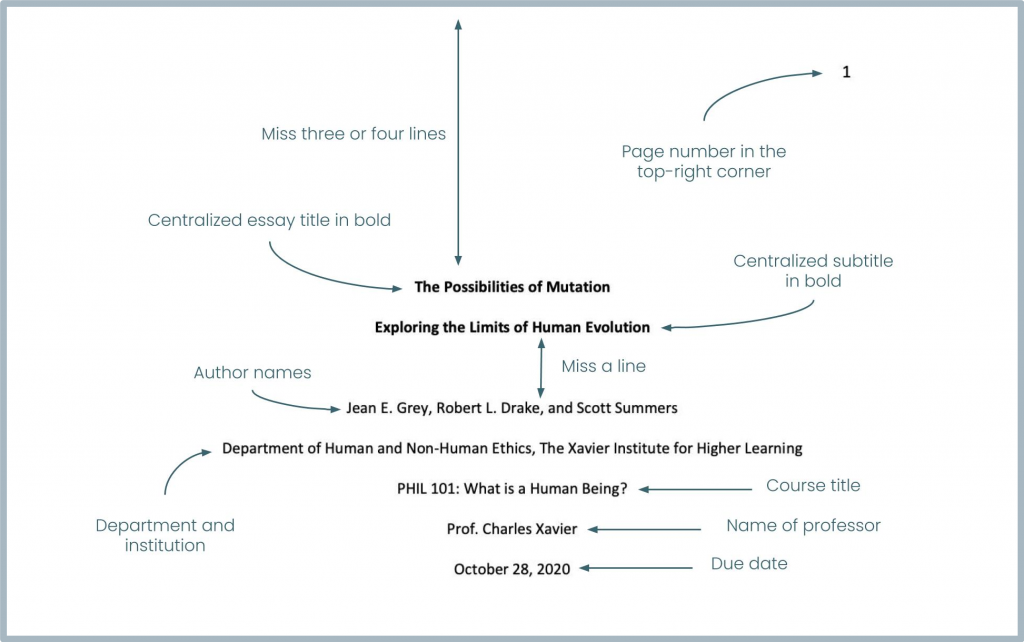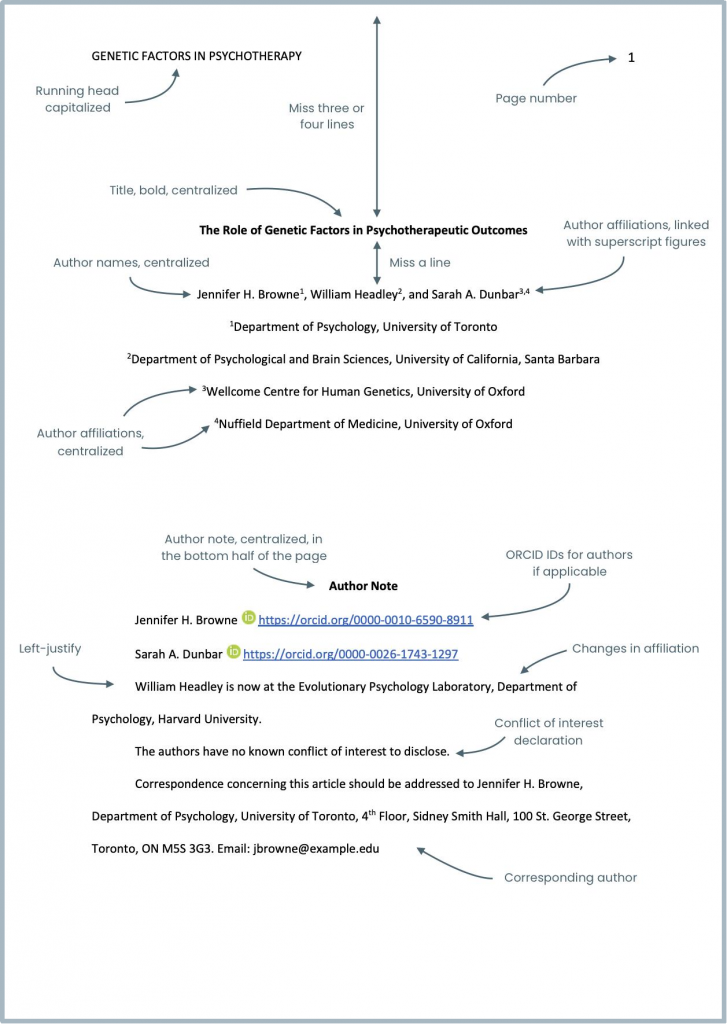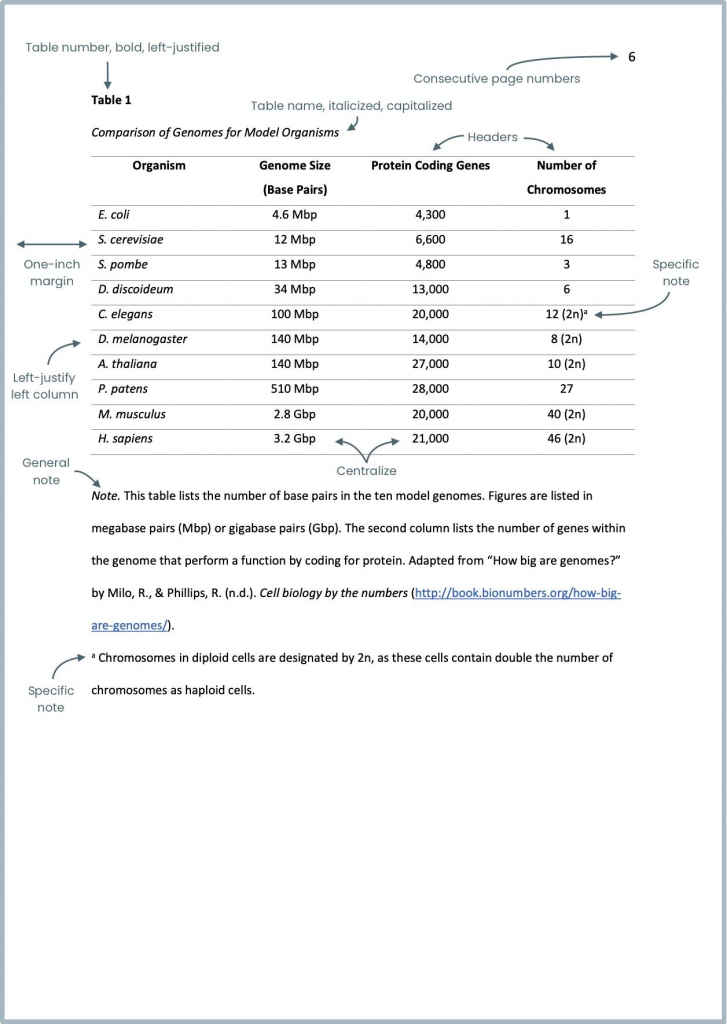APA FORMATTING IN A NUTSHELL
- Hannah Berry (Ph.D.)
- Published on 04/17/2021
- Updated on06/30/2021
This page outlines the basic rules you should use to format an academic paper in APA style. It has been compiled by our citation experts, and the information comes from the most recent version of the Publication Manual of the American Psychological Association (7th Edition).
Please note that some teachers and institutions might have their own specific requirements. You should always follow their guidelines where applicable, and remember that the most important thing when formatting an academic essay is to be consistent throughout.
A QUICK OVERVIEW OF THE APA FORMAT
Unfortunately, there is no quick tool you can use as an APA formatter for your essay, but the basic rules are easy enough to learn. Here’s an overview of the main points:
- Use a clear and legible font throughout your paper. The following are recommended:
- Sans serif: 11-point Calibri, 11-point Arial, or 10-point Lucida Sans Unicode.
- Serif: 12-point Times New Roman, 11-point Georgia, or 10-point Computer Modern.
- Double-space your essay’s abstract, main text, title, and reference list. Use your word processor’s default formatting (single-spaced) for any footnotes and endnotes.
- Include a title page, then begin your essay on a new page with the title repeated, centered and in bold at the top. Centralize first-level subheadings throughout your paper, but left-justify any second-level subheadings. Place all subheadings in bold.
- Use one-inch margins on every side of your paper unless your professor or your institution specifies otherwise.
- Left-justify the main body of your text. Do not fully justify the text. Indent the first line of every paragraph by an additional half an inch.
THE OVERALL STRUCTURE OF A PAPER
An APA paper should generally include each of the following elements in order. We provide more details about the formatting for each specific section below.
- Title Page
- Abstract and Keywords (note that, unless specifically requested, these are only required for a professional paper and not for a student essay)
- Main Text
- References
- Endnotes (or footnotes in the main text—see below)
- Tables
- Figures
- Appendices
GIVE YOUR CITATIONS A BOOST TODAY
Start your TypeCite Boost 3 day free trial today. Then just $4.99 per month to save your citations, organize in projects, and much more.
SIGN UPHOW TO FORMAT TITLE PAGES USING APA STYLE
Every paper should include an APA format title page. This is presented prior to the main text on a separate sheet of paper. Note again that this is in addition to the title that appears at the top of the first page of your main text.
There are different rules for the title pages of student essays and for those of professional papers. In what follows, we outline the formatting styles for both.
STUDENT TITLE PAGES
The first page of a student paper should include the title of the essay, centered and in bold, positioned three to four double-spaced lines down from the top of the page. You should capitalize major words, and the subtitle should be placed on a subsequent line, following the main title.
Below this, miss a double-spaced blank line and then list your full name, centered but not in bold. If you authored the paper with someone else, use the word “and” between their name and yours. If there were three or more authors, include commas between each of the names, and the word “and” before the final name.
On the next four lines, list the following information, centered and not in bold:
The Name of Your Department or School, The Name of Your College
Course Number: Course Title
Professor’s Name
Assignment Due Date
In the top right corner, include the page number (“1”). Page numbers should then follow on every subsequent page.
The following is an annotated sample title page for a student paper:
PROFESSIONAL TITLE PAGES
Professional papers written for submission to academic journals and presses contain slightly more detail than student papers. The same rules for formatting the title and the names of contributors apply. However, if the contributors have different affiliations (if they belong to different colleges, for example), then superscript figures are used to connect them. These affiliations then appear on subsequent, double-spaced lines, alongside the corresponding superscript figures, like so:
First Author Name1, Second Author Name2, Third Author Name1, and Fourth Author Name3,4
1First and Third Author’s Department, First and Third Author’s Institution
2Second Author’s Department, Second Author’s Institution
3Fourth Author’s Primary Department, Fourth Author’s Primary Institution
4Fourth Author’s Secondary Department, Fourth Author’s Secondary Institution
Note that, if all of the authors have the same affiliation, superscript figures are not used. The affiliation is simply listed beneath the authors’ names.
Beneath the affiliations, most professional papers will also include an “Author Note,” the title for which should be centred and written in bold. Beneath the title, the author’s note is left-justified and composed of a number of different paragraphs (however many are relevant). These paragraphs appear in the following order:
- ORCID iDs for any authors who have one.
- Any changes in author affiliations or the death of any authors.
- Any disclosures or acknowledgments, such as conflicts of interest or funding declarations.
- Contact information for the corresponding author.
As well as a page number in the top right corner, professional title pages should also include a running head with a shortened version of the title in all-capital letters in the top left corner. Both the running head and the page number should then appear on every subsequent page of the paper.
Here is a sample of a professional title page:
SUMMARY TABLE FOR STUDENT AND PROFESSIONAL TITLE PAGES
|
Student Paper |
Professional Paper |
|
|---|---|---|
|
Paper title |
Three to four lines from top. |
Three to four lines from top. |
|
Author name(s) |
Miss a line. |
Miss a line. |
|
Author affiliation(s) |
The department and institution where the student attends school. |
The institution where the researcher(s) work, linked by superscript numbers. |
|
Course number, name, and instructor name |
Course number: Course title. |
|
|
Due date |
Cenered, not bold. |
|
|
Author note(s) |
“Author Note” title, centered, bold. |
|
|
Running head |
Shortened title. |
|
|
Page number |
Top right corner, not bold. |
Top right corner, not bold. |
THE LIST OF REFERENCES
All APA papers should include a list of “References” after the main text and before any tables, figures, or other additional materials. The list should include all of the sources directly used to support the ideas and claims made in the main body of the argument. This is different from a bibliography, which includes background materials and wider reading.
To format your reference list, start a new page after the end of your main text and include “References” as a title, centered and in bold.
On the next line, alphabetize your references by author surname and indent any additional lines after the first one by an extra inch. A sample APA format citation would therefore look like this:
Author Surname, Initial(s). (Date). Title of work with first word capitalized (Edition if not the first). Publisher. DOI or URL
Please see our other more targeted pages for information on how to format different types of sources.
FOOTNOTES AND ENDNOTES
If used, footnotes appear throughout a paper at the bottom of the page on which the relevant note occurs. Endnotes, by contrast, appear on their own page at the end of the document, after the list of references. Both footnotes and endnotes can be used to provide supplementary information that is not essential to the main body of your argument.
To form either kind of note, include a superscript number in the relevant position in the text after any punctuation apart from a dash (—), like so.1 If a footnote number needs to be placed next to a dash, then it should precede it—like it does here2—though you should generally delay the footnote marker to the end of the sentence. Only include a footnote in the middle of a sentence if it is necessary for clarity’s sake.
Use the footnoting feature on your chosen word processor to automatically create footnotes and endnotes. You should also use the word processor’s default formatting settings, typically a 10-point version of the paper’s main font, single-spaced.
ORGANIZING TABLES AND FIGURES
Tables show either numbers or text arranged in columns and rows. Figures are any other way of presenting information visually, such as charts, photographs, illustrations, drawings, infographics, and more.
Both tables and figures can either be embedded in the main body of your text when they are first mentioned or they can be presented on separate pages at the end of your document. If they are embedded, they can either take up a whole page or, if they are small enough, then they can appear with text on the same page. In the latter case, you should place them either at the top or the bottom of the page, not in the middle. You should also leave a blank, double-spaced line between your text and the table or figure.
HOW TO FORMAT TABLES
Tables should be labelled sequentially as they occur in your text (for example, Table 1). This label then appears above the table in bold, followed by a title in italics with any important words capitalized. The font for the table should be the same as that for your paper.
Tables may include a number of headings based on how the data is categorized. That said, every column should include a heading, even the leftmost column (sometimes known as the stub column). If no heading readily presents itself for this column, then “Variable” is often used.
Center all column headings and capitalize the important words. Left-align the information in the leftmost column (apart from the column heading), but center the information in all the other cells (unless left-justifying would improve readability).
See the sample paper below for an APA format example of a table.
HOW TO FORMAT FIGURES
Figures are also labelled sequentially as they occur in your text (for example, Figure 1). As with tables, this label should then appear above the figure in question in bold, followed by an italicized title with important words categorized. The figure then follows at a size large enough to understand and read. If any text occurs in the figure (such as axis labels), style it in a sans serif font between 8 and 14 points. If necessary, provide a legend or key within the borders of the figure.
NOTES FOR TABLES AND FIGURES
Beneath any tables or figures, you can also include any of the following kinds of notes: general notes, specific notes, and probability notes. These help to clarify elements in the tables or figures that might not otherwise be understood.
- A general note should be titled “Note.” This title is written in italics and followed by a period. The note then follows (not in italics), typically detailing any abbreviations or definitions used within the table, as well as any copyright attributions or sources.
- Specific notes then come in subsequent paragraphs beneath. They are designated by superscript Latin letters (*) that occur wherever they are relevant in the figure or table itself.
- A probability note (for p values) follows as a separate paragraph beneath any specific notes. All probability notes appear within a single paragraph.
SAMPLE APA FORMAT PAPER
The following is an example of a student paper:
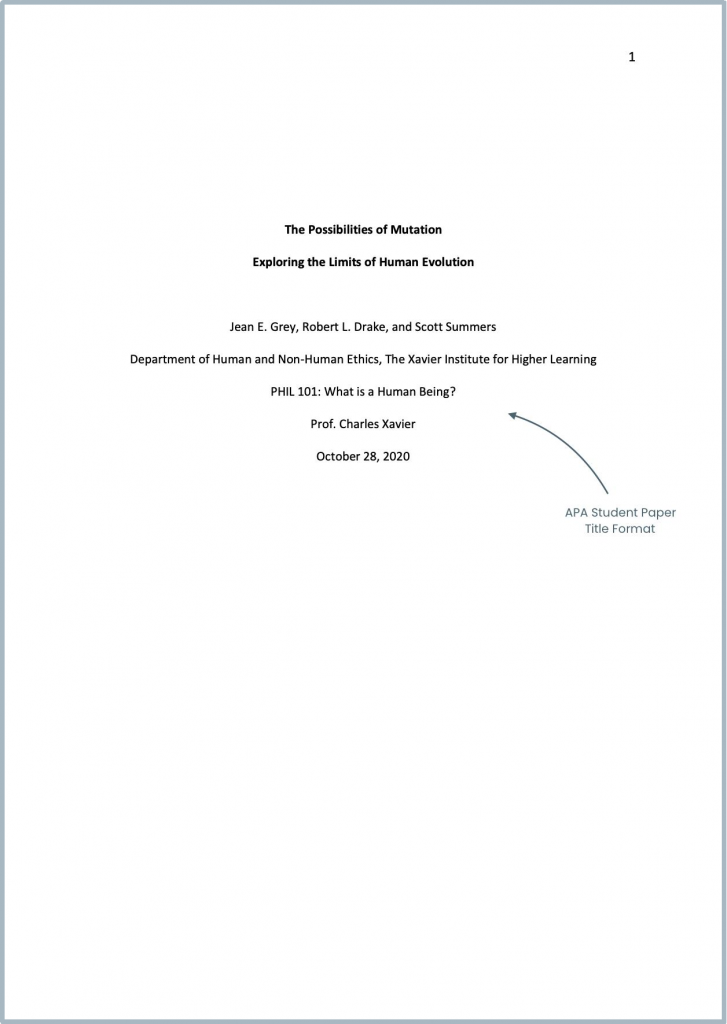
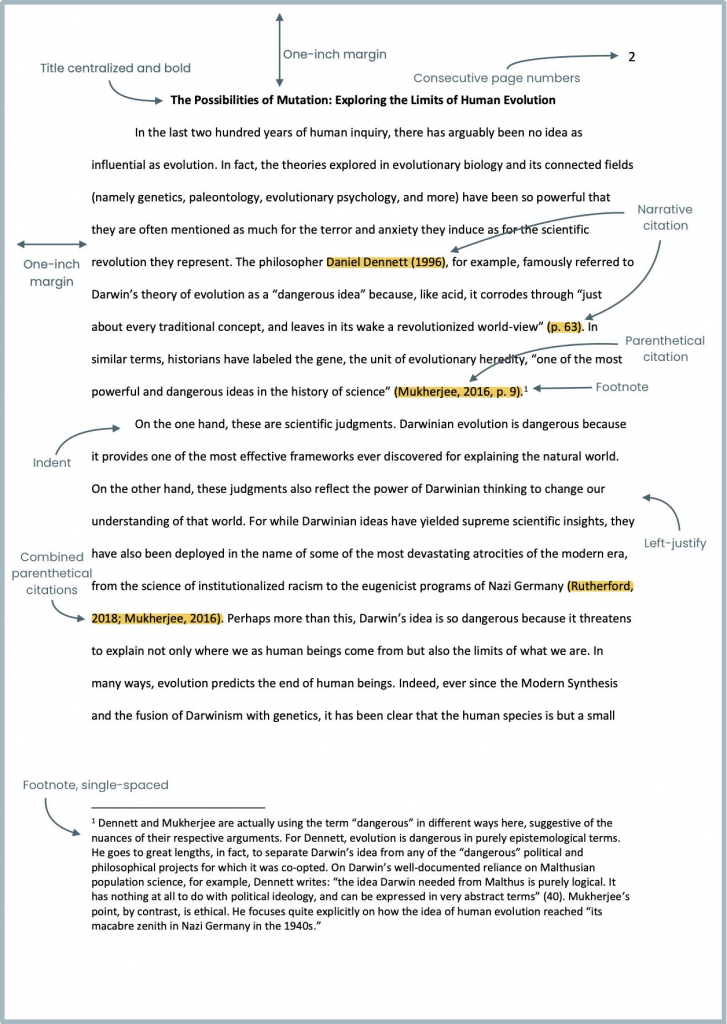
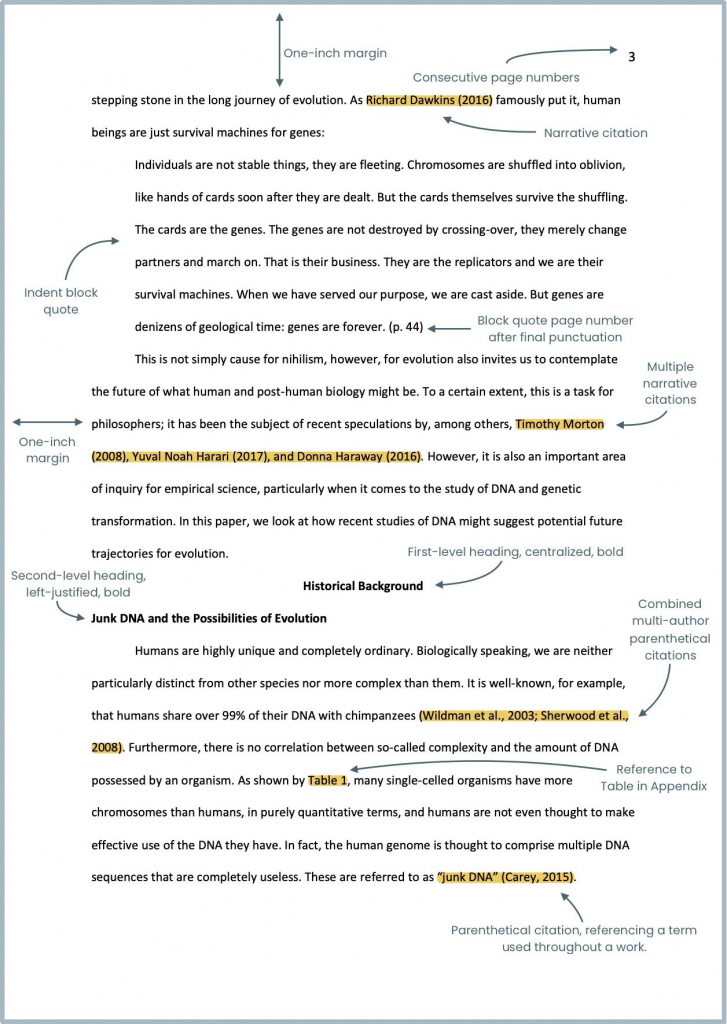
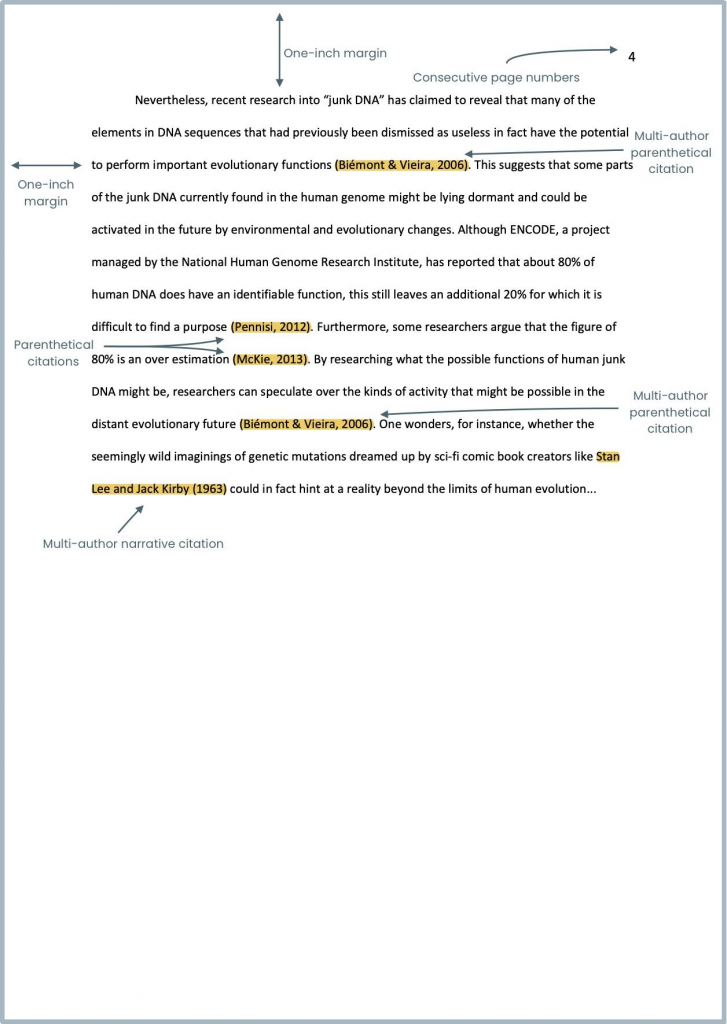
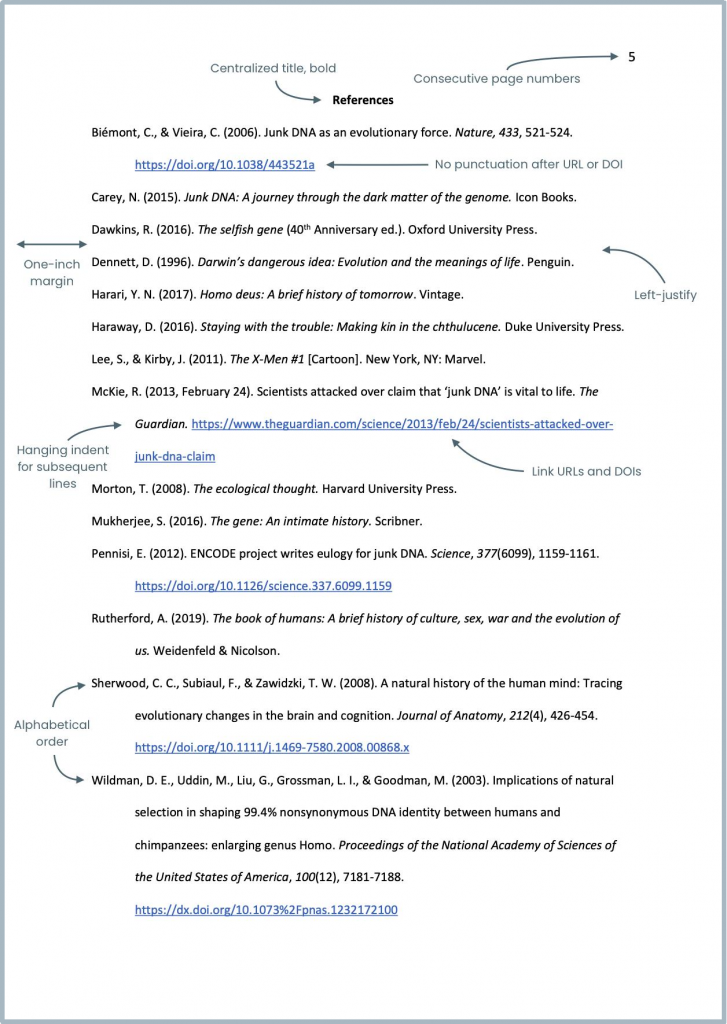
REFERENCES
American Psychological Association. (2020). Publication manual of the American Psychological Association (7th ed.). https://doi.org/10.1037/0000165-000
